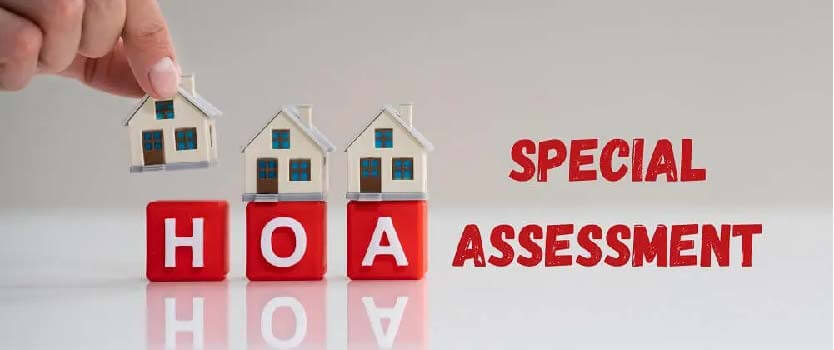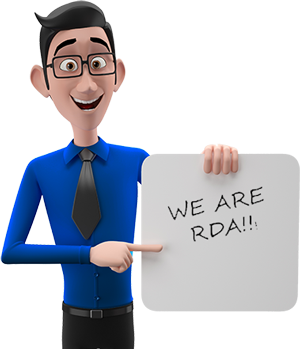SIRS Reports have become a cornerstone of financial planning in community associations, ensuring that funds are allocated efficiently for future repairs and necessary maintenance. These reports play a vital role not only in budgeting but also in promoting transparency and accountability within communities.
In Florida, the regulatory landscape for SIRS has been notably shaped by Senate Bill 154, which establishes specific guidelines and deadlines for community associations concerning structural integrity assessments. Compliance with these legal standards is essential for community boards focused on safeguarding both their financial stability and physical assets, as non-compliance can lead to serious ramifications.
This comprehensive analysis will explore the influence of SIRS reports on community association budgets, covering their purpose, methodology, and best practices for reserve fund management. By examining these elements, we aim to shed light on the significant impact SIRS reports have on community safety, property values, and overall financial planning.
The Role of Structural Integrity Reserve Studies (SIRS)
Structural Integrity Reserve Studies (SIRS) play a pivotal role in the financial stability of condominium and cooperative communities. Conducted by licensed engineers or reserve specialists, these studies meticulously assess the reserve funds necessary for future repair and replacement of building components. Integral structural systems and common elements undergo visual inspections, allowing Condo and Condominium Associations to proactively plan for maintenance expenses. This foresight minimizes the likelihood of financial burdens caused by unexpected structural failures.
For Unit Owners and property owners, regular SIRS offer transparency and instill confidence in their association’s financial management. By identifying maintenance needs early on, Reserve Advisors help associations sidestep the costlier emergency repairs and possible personal liability issues stemming from reportable incidents.
In some regions, such as Florida, the law requires SIRS for buildings over 30 years old and three stories or higher, underscoring its importance for compliance and safety. By investing in SIRS, service providers help ensure that communities can afford to uphold the integrity of structural elements, thereby maintaining property values and securing the common interest of all residents.
Legal Requirements of SIRS in Florida
In the state of Florida, a heightened emphasis on building safety has led to the implementation of stringent legal requirements for conducting Structural Integrity Reserve Studies (SIRS). For any building that is three stories or higher, a SIRS must be completed by December 31, 2024. This measure ensures that comprehensive assessments of the building’s condition are undertaken in compliance with state law. As part of the transaction process, sellers are obligated to provide a copy of the SIRS to potential buyers, bearing the cost to offer a transparent look into the structural health of the property.
To uphold the accuracy and reliability of these assessments, the SIRS must be carried out by a licensed professional engineer or a registered architect. The resulting report is detailed, comprising of comprehensive findings and expert recommendations which are essential in guiding the maintenance of the building’s structural integrity. For existing condominium and cooperative association buildings as of July 1, 2022, the initial reserve study also falls within the December 31, 2024, deadline set by new legislation. This approach ensures that all relevant structures come under scrutiny to maintain high safety standards.
Overview of Florida’s Senate Bill 154
The enactment of Florida’s Senate Bill 154 has brought about significant changes in the conduct and scope of Structural Integrity Reserve Studies. This bill has expanded the previously voluntary reserve studies to include ten critical components, among them roofing, load-bearing walls, and fire protection systems. Whereas previously, the focus was on foundational components such as roofing and painting without a mandatory professional assessment.
The implications of SB 154 are far-reaching, as it underscores the necessity for legal compliance and commitment to the maintenance of structural integrity. One of the financial impacts anticipated is the potential increase in SIRS contributions for residents, which could surge more than 50% or even double in particular scenarios. Although this may place a financial strain on residents, especially those with limited flexibility in their income, the intent of the legislation is clear—it aims to enhance safety, ensure maintenance is well-funded, and protect the long-term viability and welfare of Florida’s condominium communities.
Key Deadlines and Compliance
For condo associations established or before July 1, 2022, the clock is ticking to comply with the new mandates. The initial Structural Integrity Reserve Study must be conducted and completed by December 31, 2024. After this first critical step, regular follow-ups every ten years are required to keep up with compliance and to ensure ongoing safety and maintenance.
It is also important to note that associations scheduled for a milestone inspection by December 31, 2026, have the option to perform the SIRS concurrently, provided both are completed by the prescribed deadline. Non-compliance with these deadlines does not come without repercussions, as associations can face civil penalties, fines, and additional legal ramifications for failing to meet the defined timelines.
Timeliness in completing these essential inspections and reserve studies is not merely a matter of legal conformity—it is vital in maintaining community safety and sustaining property values. These measures emphasize the critical nature of SIRS compliance within the outlined deadlines to support the lasting well-being of Florida’s residential communities.
Importance of Milestone Inspections
Milestone Inspections are a crucial aspect of property maintenance, especially for buildings three stories or higher that are at least 30 years old. The primary goal of these inspections is to ensure that structural integrity is maintained, and buildings comply with current safety standards. By proactively identifying potential issues, timely repairs can be conducted, preventing small concerns from becoming major hazards.
Not only do these inspections uphold safety, but they also contribute to the longevity of the property, thereby safeguarding the investments of owners and residents alike. In Florida, for example, the law mandates that these Milestone Inspections occur every ten years. This regularity is key to maintain continuous adherence to safety norms and helps in the early detection of maintenance needs.
Moreover, by ensuring that buildings meet code and regulatory requirements, Milestone Inspections reduce the likelihood of accidents and injuries. They also mitigate the risk of incurring substantial repair costs in the future. For condominiums or cooperatives, this process is integral to maintaining a safe living and investment environment.
Key Milestone Inspection Benefits:
- Safety Assurance: Verifies structural integrity and compliance with safety standards.
- Investment Protection: Maintains property condition, safeguarding resident investments.
- Prevention: Identifies problems early, avoiding the evolution into serious issues.
- Regulatory Compliance: Ensures periodic confirmation of adherence to building codes.
- Cost Savings: Reduces the risk of facing unexpected, expensive repairs down the line.
Financial Planning for Reserve Funds
Effective financial management is vital for Condominium Associations and Cooperative Associations, and a key component of this management is the establishment and careful planning of reserve funds. The Structural Integrity Reserve Study (SIRS) serves as a critical tool in helping these associations prepare for the future. Typically extending over a period of 20 to 30 years, a SIRS offers a strategic framework to anticipate and budget for anticipated maintenance, repair, and replacement costs.
Reserve studies empower associations to set aside sufficient funds, ensuring that the necessary capital is available when required for significant expenditures. Adhering to the mandate that SIRS reserve funds be exclusively used for SIRS-related expenses underscores financial discipline within associations. With the knowledge that roughly 65 percent of future reserve funds are expected to be directed towards structural components, the focus on financial planning for infrastructural needs becomes clear.
A healthy reserve fund level for a condo is often recommended to be at least 70% funded relative to its total estimated reserve obligations. Achieving this threshold ensures that the projected costs for necessary repairs and replacements over the span of the next three decades are sufficiently covered, thereby securing the financial and structural future of the community.
Estimating Costs for Future Repairs
When it comes to maintaining a building’s structural integrity, understanding the financial implications is essential. Asset evaluations during the SIRS process yield critical insights into the costs associated with necessary repairs and maintenance. The study encompasses comprehensive cost estimates, assisting associations in creating informed budgets for required interventions.
Grasping the extent of both immediate expenses and long-term financial commitments is crucial. The SIRS provides strategic funding plans that assess how to effectively allocate financial resources to accommodate current needs alongside future reserve obligations. The recommendations from a SIRS can include setting reserve amounts to cover the replacement cost or deferred maintenance expense of the items inspected, all within their estimated useful life. This advanced planning ensures financial preparedness for maintaining structural systems and necessary repairs, preventing unexpected financial burdens.
Balancing Current and Long-Term Expenses
A physical property assessment is a core element of a SIRS, providing a clear view of the condition of essential infrastructure. This enables communities to anticipate and strategically plan for both immediate and future maintenance and repair expenses. A thorough financial analysis projections expected costs over the next 20 to 30 years, guiding community associations in the prudent budgeting of future expenses.
Strategic long-term planning through a SIRS delineates necessary repairs and aligns them with available funding, aiding in balancing current obligations with future financial requirements. Regularly conducted reserve studies contribute to a robust reserve fund, guaranteeing that adequate resources are on hand to deal with future expenditures, thus avoiding the need for special assessments or loans.
Well-conceived funding strategies within the SIRS help associations allocate their financial resources effectively for both immediate needs and future reserve obligations. Such preemptive measures play a crucial role in mitigating the financial strain that can emerge from sudden, large-scale maintenance issues.
Estimating Costs for Future Repairs
Estimating Costs for Future Repairs
The SIRS plays a pivotal role in financial planning for property owners, Condo and Condominium Associations, ensuring they are prepared for future repair costs. This report provides an extensive evaluation of structural systems, outlining not just immediate repair needs but forecasting future financial obligations. For licensed engineers and reserve specialists, the SIRS is a tool to determine the replacement cost or maintenance expense of common elements across their estimated lifespan.
Understanding both the present and long-term financial impacts, the SIRS offers strategic recommendations for fund allocation. Reserve Advisors work closely with Unit Owners and Condo Associations to craft funding plans that balance current service needs with future reserve requirements. It’s important that these plans address potential financial burdens by recommending adequate reserve amounts to cover these costs, mitigating the risk of personal liability for property owners.
Property owners and property owner associations can thus leverage the SIRS to anticipate and prepare for future structural element repairs, ensuring a stable financial outlook and sound maintenance of the property’s structural integrity.
Balancing Current and Long-Term Expenses
Balancing Current and Long-Term Expenses
Effective financial management is critical for community sustainability, particularly in Condominium and Homeowner Associations. A comprehensive physical property assessment, often conducted by licensed engineers or reserve specialists, is pivotal to evaluate the status of a community’s structural systems and common elements.
These assessments form the basis of Serviceable Infrastructure Studies & Reserves (SIRS), forecasting maintenance, repairs, and replacements for 20-30 years. This foresight is not only crucial for maintenance expense planning but also for ensuring that the reserve fund is robust enough to address unexpected future repair needs without imposing undue financial burdens on Unit Owners.
Strategic long-term planning within a SIRS involves prioritizing necessary repairs. This is based on the present condition of the property and available funding, seamlessly integrating current financial obligations with prospective needs.
For Condo Associations, ensuring a healthy balance between immediate maintenance requirements and long-term reserve funding is essential. By avoiding the pitfalls of special assessments or loans, property owners can enjoy financial peace and stability. This proactive approach safeguards property value and minimizes personal liability for Professional Engineers, Reserve Advisors, and Association board members alike.
|
Immediate Expenditures
|
Long-Term Reserve Funding
|
|
Structural repairs
|
Future structural systems
|
|
Maintenance of common elements
|
Replacement of aging infrastructure
|
|
Service provider fees
|
Reserve specialists’ projections
|
|
Reportable incidents’ future implications
|
Methodology in Conducting SIRS
The methodology for conducting a Serviceable Infrastructure Studies & Reserves (SIRS) is rigorous and meticulously structured to ensure a comprehensive evaluation of a property’s infrastructure. The process begins with a detailed inspection that scrutinises architectural design, construction materials, and the impact of environmental factors on the safety and integrity of the building. Professional engineers or reserve specialists systematically examine the property to guarantee that all significant elements are reviewed thoroughly.
During the SIRS assessment, the inspectors review maintenance histories to gain an understanding of how these elements have been managed over time. Current conditions of the building’s structural systems and common elements are thoroughly evaluated to pinpoint any vulnerabilities or impending issues. This includes analyzing the functionality and safety of the systems to anticipate potential failures.
The findings from the examination are then meticulously compiled into a detailed SIRS report. This report provides property owners with actionable intelligence, including specific recommendations for addressing identified issues. By following the structured methodology of SIRS, communities aim to maintain the highest standards of structural health and ensure the well-being of all occupants.
|
Steps in SIRS Methodology
|
Description
|
|
Initial Inspection
|
Assess design, materials, environmental influences
|
|
Maintenance Review
|
Review historical maintenance records
|
|
Current Condition Assessment
|
Evaluate present state, identify vulnerabilities
|
|
Detailed Reporting
|
Generate findings and actionable recommendations
|
Components of a SIRS Report
A Structural Integrity Reserve Study (SIRS) is crucial for maintaining the longevity of community structures. This detailed report targets ten key elements within a property:
- Roofing
- Load-Bearing Walls
- Floor Foundations
- Fire Protection Systems
- Plumbing Structures
- Electrical Systems
- Windows
- Foundation
- Waterproofing
- Components over $10,000
These elements are inspected for their condition, life expectancy, and the financial implications they could face if maintenance is deferred.
Key Details Captured in a SIRS Report:
- Inventory of Building Components. The list includes all crucial parts that require regular check-ups.
- Condition Assessment. Each component’s current state is evaluated, determining how urgently it requires attention.
- Cost Estimates for Repair/Replacement. Financial forecasting for future repair or maintenance expense supports proactive planning.
- Maintenance Prioritization. The report helps property owners and managers to address the most critical issues first.
By mapping out these areas, a SIRS report guides Condo and Condominium Associations, along with Unit Owners, in establishing reserve funds. This preparatory step not only enhances property safety but also mitigates potential financial burdens stemming from unplanned repairs.
Qualifications of SIRS Inspectors
Qualifications of SIRS Inspectors
Ensuring the integrity and longevity of building structures, particularly those three stories or higher in Florida, mandates compliance with Structural Integrity Reserve Studies (SIRS). This involves a meticulous inspection process conducted by professionals with specific qualifications. The individuals responsible for this vital task must be licensed professional engineers or registered architects. These credentials indicate that the inspectors have the necessary expertise to carry out a reliable and precise assessment of the building.
A licensed professional engineer, or a registered architect, possesses a deep understanding of design, construction materials, and the environmental factors that can affect a building’s stability. Their training enables them to conduct a comprehensive review during the SIRS, including a thorough evaluation of the building’s maintenance history. This helps in uncovering any potential vulnerabilities in the building’s structural system.
The table below outlines the essential qualifications for SIRS inspectors:
|
Qualification Criteria
|
Description
|
|
Professional Licensure
|
Must be a licensed engineer or reserve specialist.
|
|
Expertise
|
Knowledge of design, materials, and environmental impact.
|
|
Assessment Skills
|
Ability to evaluate and identify structural vulnerabilities.
|
|
Compliance Understanding
|
Familiarity with legal mandates for SIRS in Florida.
|
In conclusion, qualified inspectors play a critical role in the safety and maintenance of building structures, providing peace of mind to Condo Associations and property owners alike.
Best Practices for Managing Reserve Funds
When it comes to effectively managing reserve funds to address the financial impacts of the SIRS report on your community, best practices involve meticulous planning and decisive action. An accurate assessment of the remaining useful life of building components, as dictated by the SIRS, is not just a procedural necessity; it is the cornerstone of proficient financial management. This evaluation enables associations to strategically plan for future repairs and replacements, ensuring they are neither caught off guard nor financially overextended.
It is crucial to acknowledge that SIRS reserve funds must be earmarked exclusively for SIRS-related expenses. This underscores the importance of adherence to legislative requirements that not only demand compliance but also the strategic allocation of funds towards preserving the structural integrity of the building.
Associations may consider establishing separate reserve pools dedicated to their SIRS-related needs. This approach not only streamlines accounting practices but can also potentially reduce the required contributions, promoting financial stability throughout the community. Additionally, changes in the law that expand coverage to include critical structural elements—such as roofs, load-bearing walls, and electrical systems—further accentuate the importance of robust reserve planning.
A clear understanding of which components require reserved funds, especially primary structural elements like foundations and floors, is vital. It ensures the long-term safety of the property, thereby protecting both the physical and financial investments of Unit Owners and Condominium Associations.
In essence, each best practice, from accurate life-cycle evaluations to specialized fund pools, delivers a framework within which your community can manage financial burdens with precision and foresight.
Developing a Reserve Fund Policy
Developing a solid reserve fund policy is a navigational chart for Condominium and Co-operative Associations. It provides a blueprint for assembling a reserve fund rich enough to cover anticipated expenditures crucial for maintaining financial stability. The backbone of this policy is a comprehensive reserve fund plan that draws upon the meticulous findings of property inspections and financial analyses. This plan should outline the timing and hierarchy of repairs and replacements needing attention.
To ensure that reserve funds are substantial, the policy ought to aim for a reserve that is at least 70% funded. This benchmark recognizes best practices that mitigate the risk of insufficient funding when future repairs become current necessities. Furthermore, incorporating provisions for milestone inspections carried out by licensed engineers or architects is critical. Such inspections offer indispensable insights into the property’s physical state and serve as an ongoing guide for the reserve fund planning process.
Another strategic consideration for developing a reserve fund policy is accounting for inflation and possible investment returns on reserve funds. Doing so guarantees that there are enough resources available for continuous maintenance and unexpected repairs, safeguarding the property owner’s interests and the overall structural health of the community’s assets.
Regular Review and Updates of Reserve Studies
Regular reviews and updates of Reserve Studies are not just recommended; they are mandated by Florida law. This legal requirement ensures that Condominiums and Cooperatives adhere to legislations such as the Florida Condominium Act and the Cooperative Act to evade potential legal consequences. In light of these regulations, a Structural Integrity Reserve Study (SIRS) necessitates an exhaustive evaluation of ten critical components, and this study should undergo periodic reviews as part of the community’s asset preservation strategy.
These continuous assessments play an integral role in supporting proactive maintenance plans. Given Florida’s unique climate—with its inherent risks that include hurricanes and high humidity—regular updates to the Reserve Studies become all the more crucial for timely interventions in property upkeep.
From the perspective of Unit Owners, the property values hinge significantly on the condition and maintenance results stemming from regular reserve studies. An updated reserve study serves as a reassurance that their investments retain their allure in a competitive real estate market.
Following the introduction of SB 154, which clarified funding requirements for reserves, it became clear that only items with a remaining useful life of more than 25 years can forgo full funding. This legislative detail reinforces the importance of regular updates to Reserve Studies, ensuring that funding strategies are in alignment with the evolving asset management needs.
Impact of SIRS on Community Safety
The Structural Integrity Reserve Studies (SIRS) hold significant importance for ensuring the safety of communities in Florida. Predominantly addressed by Condo Associations and Condominium Associations, SIRS involves licensed engineers and reserve specialists conducting thorough evaluations of the property. These studies play a pivotal role in detecting wear and tear on common and structural elements like roofs, foundations, and other critical systems.
By identifying maintenance needs, SIRS helps to forecast future repair and replacement costs, making it easier for Unit Owners and property owners to prepare financially, thus mitigating financial burdens associated with unexpected maintenance expenses. As a result, properties are kept up to date, which not only maintains aesthetic appeal and functionality but also prevents decay that could lead to safety hazards.
Moreover, the professional assessment provided by Reserve Advisors or Professional Engineers under SIRS helps in maintaining the structural integrity of buildings, ultimately protecting the personal liability of owners and ensuring that the community remains safe for all residents. The implementation of these proactive maintenance plans further affirms that properties within the community are safeguarded against sudden failures of structural systems, reinforcing resident safety and investment protection.
Influence of SIRS on Property Values
The Structural Integrity Reserve Study (SIRS) is instrumental in shaping the fiscal landscape of a community, particularly in relation to property values. By providing a clear, long-term financial strategy, SIRS secures the trust of unit owners in Condo and Condominium Associations regarding their investment.
Acting as a key tool for budget planning, SIRS enables communities to systematically address necessary structural repairs and maintenance expenses. This thorough planning not only safeguards investments but also preserves— and potentially augments—property values, making properties more appealing to prospective buyers and lenders.
Furthermore, a property with a proactive, every-five-year SIRS regimen showcases its commitment to structural soundness. This vigilance significantly boosts real estate marketability. In turn, well-maintained buildings, under the guidance of licensed engineers and reserve specialists, can command better sales prices and witness a surge in demand.
Moreover, SIRS assessments feed into the overall perception of the community, as properties with documented upkeep of common and structural elements are seen as desirable investments. The meticulous attention to structural systems maintained through SIRS can thus be a pivotal factor in bolstering the financial fabric of a community.
Compliance and Enforcement Implications
For communities, especially those within Florida, adhering to the mandated Structural Integrity Reserve Study (SIRS) is not a mere formality but a necessary condition for compliance with legal standards. With the deadline set for December 31, 2024, all buildings three stories or higher are expected to undergo a thorough SIRS conducted by qualified professionals— either a licensed professional engineer or a registered architect. This ensures the trustworthiness of the assessments made in the reports.
Senate Bill 154 adds another layer of responsibility on the shoulders of board members and officers of Condo and Condominium Associations. It establishes explicit liabilities for those who fail to meet their obligations in acquiring the required SIRS reports. Non-compliance could potentially result in personal liability for these officers, further underscoring the seriousness of these regulations.
Moreover, sellers engaging in property transactions are now legally mandated to provide a copy of the SIRS report to potential buyers, at the seller’s expense. This brings forth a transparency that is indispensable in real estate dealings, ensuring that all parties are fully informed of a property’s structural integrity.
Those detailed reports that emerge from the SIRS process are not simple documents but are a reflection of a property’s commitment to safety and longevity. They include comprehensive findings and actionable recommendations, paving the way for associations to maintain their buildings in line with high legal standards.
Consequences for Non-Compliance
Non-compliance with the SIRS and Milestone Inspection requirements carries substantial risks and penalties. Hefty fines from local authorities await those who fail to meet the inspection deadlines. Should governing bodies discover that a property has missed these crucial dates, they may demand immediate inspections and repairs that not only cause disruption but also potentially result in greater financial burdens.
Moreover, a shadow looms over properties negligent in complying with inspection requirements. Should there be a structural failure, not only is it a safety catastrophe, but the property owner could face legal consequences for any damages that ensue due to this negligence.
Authorities may intervene with random audits or mandated inspections to assure building safety standards are met. Cases of non-compliance not only heighten safety risks but may depreciate property values, erode public trust, and destabilize the sense of investment security within a community.
Legal Obligations for Associations
Condominium and cooperative associations in Florida are bound by the legal obligations laid out in the Florida Condominium Act and the Florida Cooperative Act. Central to these obligations is the fiduciary duty to act in the best interests of their members. Part of this fiduciary responsibility is complying with state laws and local regulations, including those governing SIRS and Milestone Inspections.
Financial transparency is a cornerstone of this duty. Associations are tasked with properly managing funds collected from unit owners, especially those earmarked for reserves. These funds are designated for the future repair and replacements as identified in the SIRS, and using them otherwise could lead to legal implications.
Failure to comply with the legislation that outlines the requirements for SIRS can undermine the credibility of an association, potentially leading to legal repercussions that could affect its administration and governance. It is imperative for associations established before July 1, 2022, to complete their initial SIRS by the end of 2024 and follow up with subsequent studies every 10 years to remain in good legal standing.
Conclusion and Future Considerations
The introduction of the Social Impact Reports (SIRs) has instituted a new benchmark in financial planning for community associations. Adhering to this standard necessitates meticulous attention to detail by licensed engineers, reserve specialists, and professional engineers to ensure that structural systems and common elements are well-maintained and that future repair and maintenance expenses are anticipated and accounted for accurately in reserve funds.
For Condo and Condominium Associations, this means collaborating with qualified service providers to assess the reserve funding for structural elements accurately. Ineffectiveness in this approach can impart significant financial burdens on the community, wherein property owners, including Unit Owners, may face unforeseen dues and assessments.
Moving forward, associations must ensure that:
- Reportable incidents are documented and reviewed.
- A proactive strategy is implemented to mitigate personal liability.
- Reserve Advisors are consulted for their expertise.
- Budgets are planned with the foresight of potential financial impacts.
SIRS compliance is essential, and all involved parties should be dedicated to the financial health and sustainability of their communities, making sure that the life cycle of common assets is reflected in responsible financial planning.
Related Articles:
- Meeting SIRS Requirements: Best Practices for Structural Integrity
“Best practices for meeting SIRS requirements to ensure structural integrity in community associations.”
- Why Structural Integrity Reserve Studies Matter for High-Rises
“The importance of structural integrity reserve studies for high-rise buildings.”
- Milestone Inspection Breakdown: What You Need to Prepare
“Preparation tips for milestone inspections to maintain structural integrity.”








